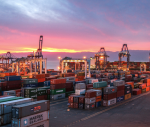You are here
US-China decoupling by the numbers
Sep 01,2023 - Last updated at Sep 01,2023
NEW HAVEN — American politicians have a long history of mangling economic-policy debates. Some recognise reality, like when George H.W. Bush characterised so-called supply-side tax cuts as “voodoo economics”. But far too many to distort economic statistics and analysis to score political points, think of “Modern Monetary Theory” or “deficit scolds”.
The current debate over US-China decoupling is a case in point. From President Joe Biden on down, US policymakers have finally realised that it makes no sense to argue for a full-blown decoupling. Treasury Secretary Janet Yellen claims it would be “disastrous”. Secretary of State Antony Blinken and National Security Adviser Jake Sullivan also dismiss the possibility, stressing that record bilateral trade is prima facie evidence that decoupling simply cannot happen for two tightly integrated economies.
A careful look at the numbers offers a more nuanced assessment. Yes, total US-China bilateral trade, exports and imports of goods and services, combined, hit a record $760.9 billion in 2022. But GDP and most of its major components also broke records. And these figures are all expressed in nominal dollars unadjusted for inflation. In the current inflationary climate, current-dollar estimates of many indicators hit new records almost every day. That tells us very little about the ebb and flow of real economic activity.
Scaling cross-border trade by the level of GDP is a more accurate measure of how trade with China drives the US economy. On that basis, US-China bilateral trade in goods and services was 3 per cent of US GDP in 2022, down 19 per cent from the peak of 3.7 per cent in 2014. While this is a far cry from full decoupling, which would imply a US-China trade-to-GDP ratio closer to zero, it certainly qualifies as a meaningful step in that direction.
Unsurprisingly, 75 per cent of this recent reduction occurred after 2018, when then-president Donald Trump’s administration imposed steep tariffs on Chinese imports. The downward trend in China’s share of the overall US trade imbalance will likely continue, especially if, as expected, Joe Biden’s administration maintains the Trump tariffs and introduces yet another round of sanctions on advanced technologies.
That possibility underscores a critical factor ignored by most politicians in debates about decoupling: the macroeconomic underpinnings of America’s outsize trade deficit. In 2022, despite a reduction in the trade imbalance with China, the total US merchandise trade deficit still hit a record $1.18 billion with 106 countries (including China).
As I have repeated ad nauseam, this is an unfortunate but natural outgrowth of an extraordinary shortfall of US domestic saving. America’s net domestic saving rate fell to -1.2 per cent of national income in the first quarter of 2023, the weakest reading since the 2008 global financial crisis and far short of the 7.6 per cent average from 1960 to 2000. Consequently, lacking in saving and wanting to invest and grow, the United States has had to run massive balance-of-payments and multilateral trade deficits to attract foreign capital.
The uncomfortable reality for US politicians is that, without addressing the budget deficit, the saving shortfall at the root of America’s multilateral imbalance will only persist. This means that targeted bilateral actions, in this case, tariffs and sanctions against China, cannot fix the trade problem.
That is where the decoupling tale takes an especially ominous twist. China’s share of the overall US merchandise trade deficit, while still the largest of any country, has shrunk since the onset of the trade war, falling from 47 per cent in 2018 to 32 per cent in 2022. Over the same period, the collective share of six other countries, Canada, Mexico, India, South Korea, Taiwan and Ireland, has risen from 24 per cent to 36 per cent. Such trade diversion is hardly a surprise. It is a given for any saving-short economy that imposes tariffs and/or sanctions on a major trading partner.
The trade diversion from China is especially insidious because it shifts the deficit from a low-cost provider of imported goods to higher-cost producers. That is one reason why most economists scream that protectionism is ultimately a tax on domestic companies and consumers. Those cries have evidently fallen on deaf ears in Washington. But the fact remains that squeezing China is basically the political equivalent of rearranging the deck chairs on the Titanic.
Yellen, a first-rate economist, knows all of this. In one sense, she was correct when she said, in an exchange following her testimony before the House Financial Services Committee on June 13, that it would be disastrous “to attempt to decouple from China. De-risk? Yes. Decouple? Absolutely not”. Alas, this is a false dichotomy. A complete decoupling is a straw man. The reality is far more incremental.
Yet, that reality turns out to be at odds with mounting geopolitical concerns. Following Europe’s lead, the Biden administration has attempted to reframe the debate about economic decoupling in security terms, stressing that “de-risking”, or a reduction of excessive dependency on Chinese supply chains, can now be justified on national-security grounds.
While that argument is debatable, the numbers are not. The footprint of decoupling is already evident in the shifting composition of the US trade deficit away from China and the disentangling of China-centric supply chains that such trade diversion implies. Whatever you call it, de-risking or incremental steps on the road to decoupling, there is no escaping the deleterious effects on the US economy. Once again, US politicians are doing their best to obfuscate reality and change the subject.
Stephen S. Roach, a former chairman of Morgan Stanley Asia, is a faculty member at Yale University and the author of “Accidental Conflict: America, China, and the Clash of False Narratives” (Yale University Press, 2022). Copyright: Project Syndicate, 2023.













